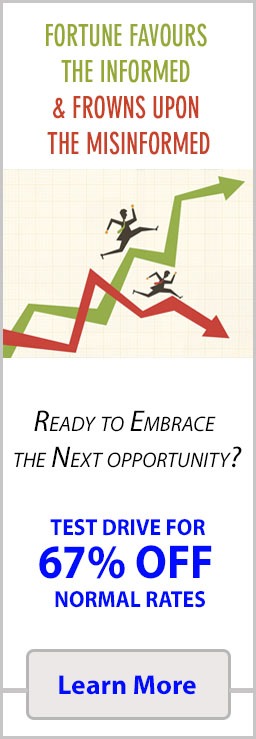
Dark Psychology Definition: How Your Mind Got Mugged and You Applauded
Updated Aug 22, 2025
Step back and survey the landscape. We’re submerged in data—much of it engineered to look important. This isn’t accidental; it’s crafted to mimic meaning. The effect is a behavioral loop for investors: a jittery swing between calm and anxiety. Mini bull–bear cycles echo the broader mood and get etched into charts and sentiment gauges, warping everything we think we see. Cycles stretch longer than expected or snap sooner than they should. That’s not randomness; it’s the predictable outcome of an attention economy that rewards noise and confusion.
The intent is simple: project surface chaos that distracts the eye. The turbulence is largely cosmetic—market theater. Most investors don’t realize they’ve been cast as extras in a script written to harvest their attention, liquidity, and conviction.
Modified Learned Helplessness
Prolonged stress at the micro level spills into the macro stance. That’s where a “modified learned helplessness” sets in. It’s not full despair or apathy; it’s attachment. Investors cling to the last position that felt safe—bullish or bearish—and it becomes an anchor long after the original logic has expired.
This isn’t a permanent state; it’s a holding pattern—often cultivated. Sophisticated players don’t just study crowd psychology; they weaponize it. The aim isn’t to inform but to disorient, to fragment focus, and to drain resolve.
The dynamic is well documented in behavioral science. Seligman’s experiments on learned helplessness showed how unpredictable, uncontrollable stressors can shut down adaptive responses. Curt Richter’s forced‑swim work suggested that altering expectations—introducing relief—can radically change persistence. Markets rhyme with both: enough whipsaws and mixed signals, and participants either stop testing hypotheses or cling to one ideological camp. That’s why the crowd ends up hyper‑polarized. And the operators behind the curtain? They stoke both sides, building polished outlets to legitimize each narrative and keep the cycle turning.
The Division Machine
Each one a silo, echoing the same recycled rage. Controlled chaos dressed up as choice. In simple terms, to divide and conquer, they craft leaders who echo the script. Spin entire ecosystems to make each narrative feel whole, true, and self-contained. That illusion of legitimacy? That’s the bait, and that’s what fuels extreme polarisation and division.
And voila, now you’ve got a self-reinforcing machine. While the masses argue over breadcrumbs, the architects continue the real mission: robbing them blind. And if people start waking up? No problem. Light more fires on both ends of the aisle, and once again, they’ll turn on each other. Rinse and repeat.
Need proof? Look at the biggest scams in modern history—blatant, obvious frauds—and tell me how many of the top dogs went to prison. COVID? We said it from the start: nobody of significance would face justice. The Clinton era, the Trump era, and the Biden era follow the same pattern: loud accusations, headlines, hearings, and then Nothing. The real players walk away richer every time.
Hidden in Plain Sight
So, etch this into your mind—brutal as it is. The elites don’t bother hiding the truth. They don’t need to. It’s all right there: in the books, in the data, the documentaries, the lone voices screaming from the fringes. But the herd doesn’t look. Or worse, they look and still choose comfort over truth.
That’s why they’re seen as expendable. Cannon fodder. And that old phrase, “useless eaters”? It wasn’t coined for drama. It was an observation, and it still fits like a glove for those in power.
There’s a silver lining, thin but real—depending on which camp you fall into: the open-minded who ask why, or the closed who parrot what. The elites do admire intelligence. They respect those who take the time to study the game, trace the manipulations, and decode the cycles. And if you manage to break free from the herd, they won’t just tolerate you; they will leave you alone.
The Price of Awakening
But there’s a catch: don’t stir the hornet’s nest. Please don’t wake the dumb burros from their slumber. Because when startled, they don’t ask questions; they kick, not at the system, but at the one who dared to rattle their illusion. So, the elites leave the thinkers alone as long as they don’t get loud.
Remember, good Samaritans often end up dead Samaritans. Why? Try showing people the truth, and they’ll come for your throat. They’ll fight harder to defend the illusion than they ever would to defend reality. Just ask Plato. His allegory of the cave wasn’t a theory; it was prophecy.
The big players know this. They don’t want chaos; they want control. Stir the hive, and you won’t wake the sleepwalkers; you’ll push them into a frenzy. And that kind of chaos isn’t good for anyone. It’s not just bad for the sheep. It isn’t good for the wolves, either. That’s why dissenters get silenced. Not because they’re wrong but because they’re dangerously right.
Dark Psychology: Weaponizing Market Sentiment
The application of dark psychology to market manipulation is sophisticated and disturbingly effective. The masters of this craft understand that markets move on emotion first, logic second. Consider the coordinated FUD (Fear, Uncertainty, Doubt) campaigns that precede major institutional accumulation phases. When JPMorgan CEO Jamie Dimon makes dire pronouncements about economic outlook while his trading desk quietly accumulates assets, we’re witnessing dark psychology.
One particularly potent example occurred during the 2020 market crash. While public-facing market commentary emphasised “unprecedented uncertainty,” several major funds were executing massive buy programs. The panic-selling retail investors experienced wasn’t organic—it was engineered through carefully timed news releases, analyst downgrades, and apocalyptic headlines. By the time the dust settled, ownership of valuable assets had transferred from retail to institutional hands.
Dark psychology practitioners understand that timing is everything. They create artificial market bottoms through coordinated short-selling, followed by strategically placed “insider” rumours about potential recoveries. This whipsaws traders who lack the capital to withstand volatility. The “smart money” isn’t smarter—it simply has psychological warfare tools most investors don’t recognise.
Perhaps most insidious is the weaponisation of FOMO (Fear Of Missing Out). Market makers often create artificial breakouts with just enough volume to trigger technical indicators, drawing in retail traders before promptly reversing course. These aren’t failed breakouts; they’re psychological traps designed to separate emotional traders from their capital.
The Dark Synthesis: Technical Analysis as Psychological Warfare
When dark psychology merges with technical analysis, the combination becomes devastatingly effective. Consider that technical analysis itself is simply mass psychology mapped onto charts. The wizards behind market manipulation understand this deeply—they don’t just read the charts; they actively design them.
Imagine how powerful this becomes when you can not only predict behaviour based on chart patterns but also engineer those patterns. Major funds routinely create false breakouts from classic patterns like head-and-shoulders formations, knowing precisely how many stops are placed just above resistance levels. When they trigger those stops, they simultaneously open short positions and ride retail liquidations downward.
Volume analysis offers another avenue for manipulation. By executing programmed trades designed to create certain volume profiles, market makers effectively “paint the tape” with signals they know technical analysts will interpret in predictable ways. The classic “distribution day” pattern often seen before significant downturns isn’t always organic—it’s frequently manufactured to facilitate institutional positioning.
Even oscillators like RSI and MACD have become weapons rather than tools. By systematically pushing prices to create specific readings on these indicators, manipulators effectively “hack” the decision-making processes of technical traders. An “oversold” RSI reading might be an engineered signal designed to draw in buyers before another leg down.
The synthesis is most evident during option expiration periods, where dark psychology practitioners understand how to pin prices at maximum pain points for option holders. The charts show “technical” reasons for price action, but behind them lies a calculated psychological operation targeting predictable human reactions to loss and gain.
Conclusion: Navigating the Manipulated Maze
The marriage of dark psychology and market manipulation isn’t just theory—it’s the operating system of modern markets. But awareness creates opportunity. The most successful traders aren’t those who ignore these realities but those who recognise the fingerprints of manipulation and adjust accordingly.
Perhaps the greatest edge comes not from technical prowess or fundamental analysis but from psychological distance—the ability to see markets as engineered environments rather than natural phenomena. When you understand that panic is manufactured, euphoria is orchestrated, and confusion is the desired state, you gain something invaluable: perspective.
This doesn’t mean surrendering to cynicism. Rather, it invites a higher level of awareness, where technical signals are filtered by understanding who benefits from your interpretation of them. The most powerful trading position isn’t long or short; it’s mentally independent.
In this manipulated maze, the ultimate skill isn’t prediction—it’s discernment. Not forecasting what markets will do, but understanding why they’re being made to do it. That’s where true market mastery begins.















